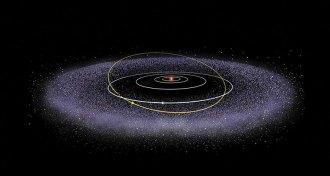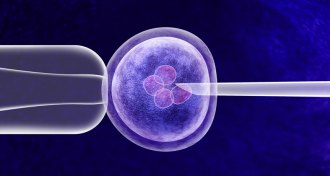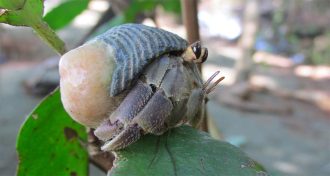Search Results

Kuiper Belt Dust May Be Sprinkled in Our Atmosphere
This guide asks students to put astronomical scales in context, think about how scientists study phenomena that are distant in space or time and analyze data.
Dusty data dive
Students will practice analyzing and graphing data using two data tables from a primary research study about space dust.
Measure the universe
These discussion prompts help students think about the scale of the solar system and universe, and how scientists study phenomena that are hard to reach in space or very distant in time.
Rethinking space dust origins
Students will answer questions based on the Science News article "Kuiper belt dust may be sprinkled in our atmosphere."

Ban on Gene-edited Babies Proposed
This guide explores basic topics related to gene editing and other applications of genetic engineering.
The great gene-editing debate
Students will research and debate a contentious issue, arguing an assigned viewpoint based on scientific evidence. This debate is focused on gene editing for the creation of human babies, but can be easily adapted for other topics.
Explore genetic engineering’s legacy
These discussion prompts explore how genetic engineering has been used in medicine, agriculture and basic research.
Pressing pause on gene editing
Students will answer questions based on the Science News article "Ban on gene-edited babies proposed."

Hermit Crabs Are Drawn to the Dead
This guide asks students to connect ecological concepts to the real world and examine how science gets translated from research study to news article.
Getting source savvy
Students will explore similarities and differences in how scientific research is reported in a journalistic article versus a primary research paper.
Move into a hermit crab’s shell
These discussion prompts connect concepts including energy, competition, adaptation, speciation, natural selection and chemical and physical changes to a real-world example.
Surveying the hermit crab housing market
Students will answer questions based on the Science News article "Hermit crabs are drawn to the dead."